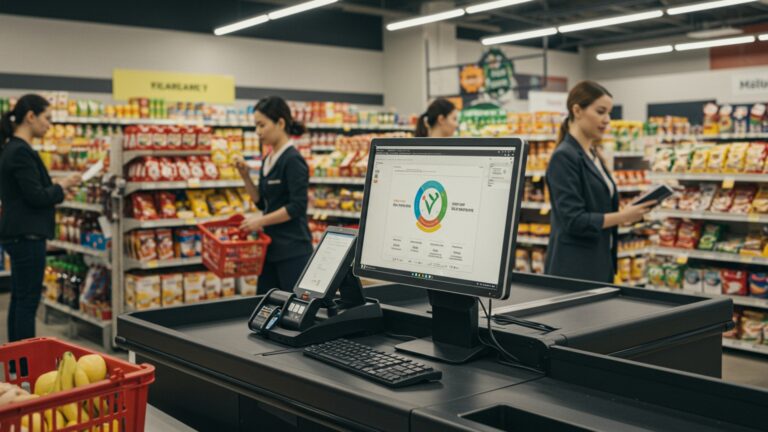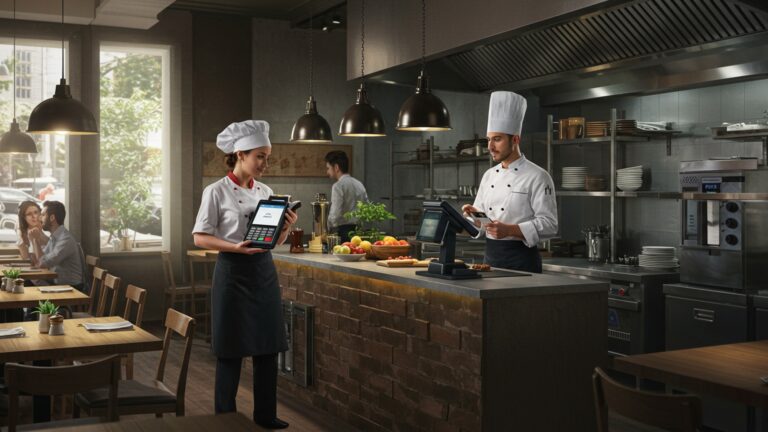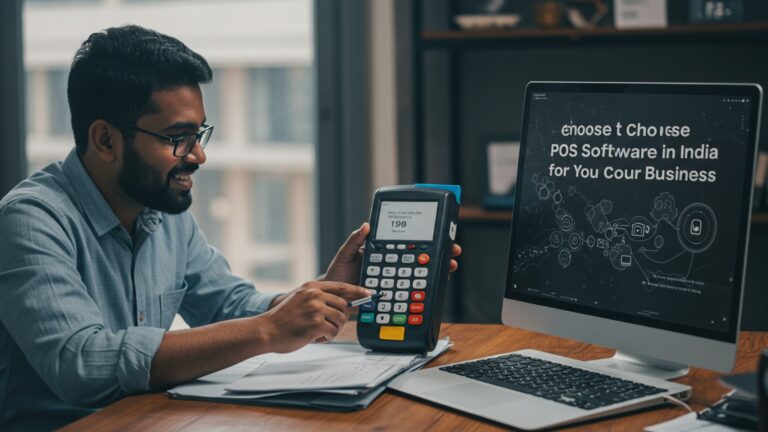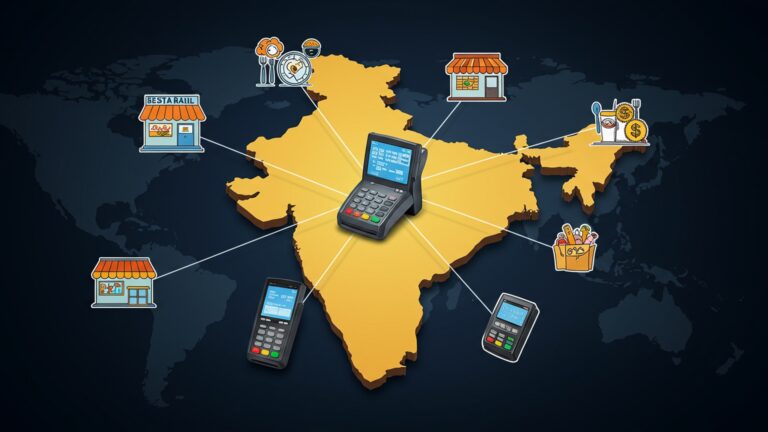A Comprehensive Guide to Mastering Essential POS Software Features
The modern retail and hospitality landscape increasingly relies on sophisticated POS software to transcend simple transaction processing, transforming operations into data-driven powerhouses. Businesses now leverage these critical systems for real-time inventory management, robust customer relationship management (CRM). advanced sales analytics, moving far beyond basic payment terminals. Mastering features like integrated loyalty programs, seamless omnichannel fulfillment. secure contactless payment processing is no longer optional; it’s essential for enhancing operational efficiency, delivering superior customer experiences. securing a competitive edge in today’s dynamic market, where mobile POS solutions and cloud-based analytics drive strategic decisions.
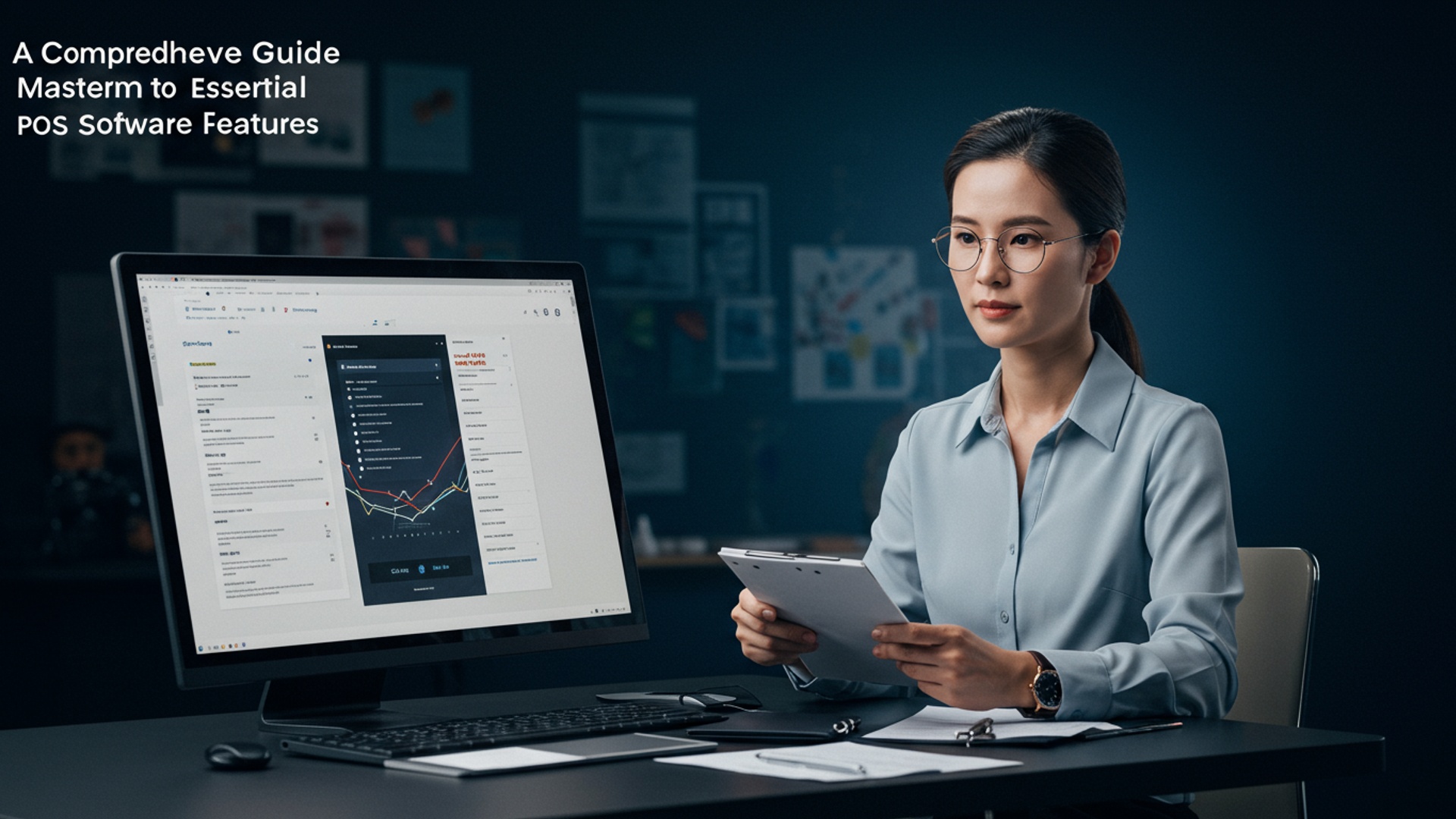
Understanding the Core of POS Software
In today’s fast-paced retail and hospitality landscapes, the term ‘Point of Sale’ (POS) software has become synonymous with efficiency and modern business operations. At its heart, POS software is a sophisticated system that processes transactions. its capabilities extend far beyond simply ringing up sales. It’s the central hub for managing inventory, tracking customer data, processing payments. generating critical business reports.
Historically, POS systems were rudimentary cash registers. These analog devices could only record sales and print receipts. But, with the advent of digital technology, modern POS software has evolved into comprehensive business management tools. Think of it as the brain of your retail or restaurant operation, connecting various aspects of your business into a cohesive, manageable system. For instance, a small boutique might use basic POS software to manage daily sales, while a large chain restaurant leverages advanced POS software to handle complex orders, table management. kitchen display systems simultaneously.
The essential components of a modern POS system typically include:
- Hardware
- Software
- Payment Processing
- Network Connectivity
This encompasses the physical devices like a touchscreen monitor, barcode scanner, receipt printer, cash drawer. credit card reader.
The operating system and the actual POS software application that runs on the hardware, providing the interface and functionality for all operations.
Integration with third-party payment gateways to securely handle credit, debit. contactless payments.
Often cloud-based, allowing for real-time data synchronization across multiple terminals or locations.
The strategic implementation of robust POS software is no longer a luxury but a necessity for businesses aiming to streamline operations, enhance customer experience. gain actionable insights into their performance.
Essential Features for Sales and Transaction Management
The core function of any POS software lies in its ability to efficiently manage sales and transactions. This goes beyond merely accepting money; it involves a suite of features designed to make the sales process seamless for both the staff and the customer.
- Sales Processing
This feature allows for quick item entry, either by scanning barcodes or manually searching for products. It supports various transaction types, including sales, returns, exchanges. voids.
For example, during a busy holiday season, a retail associate can quickly scan multiple items, apply a promotional discount. process the sale in mere seconds. Many modern POS software solutions also allow for custom pricing, bulk discounts. loyalty point redemptions directly at the point of sale.
// Example of a typical sales transaction flow in POS software function processSale(items, discounts, customer) { let subtotal = calculateSubtotal(items); let totalDiscount = applyDiscounts(subtotal, discounts); let finalAmount = subtotal - totalDiscount; // ... further steps for payment and receipt generation return finalAmount; }
A critical component, this feature handles various payment methods, including cash, credit/debit cards (EMV chip cards), mobile payments (Apple Pay, Google Pay). gift cards. Secure and compliant payment processing, often adhering to PCI DSS standards, is paramount for protecting customer data. Many POS software systems integrate directly with payment processors, ensuring smooth and secure transactions.
Particularly crucial for restaurants and service-oriented businesses, order management features allow staff to hold orders, recall them, split bills, or merge tables. This flexibility significantly improves customer service and operational flow. Imagine a group of friends wanting to split a restaurant bill; good POS software makes this a trivial task, preventing manual calculations and potential errors.
In a real-world scenario, a cafe using advanced POS software can manage dine-in, takeout. delivery orders simultaneously. Baristas can see new orders pop up on their screen, mark items as prepared. ensure timely service, all thanks to integrated sales and order management features of their POS software.
Inventory Management: The Backbone of Retail
Effective inventory management is arguably one of the most powerful features of modern POS software, directly impacting a business’s profitability and customer satisfaction. It transforms the chaotic task of stock control into a streamlined, automated process.
- Real-time Stock Tracking
- Supplier Management and Purchase Orders
- Stock Takes and Adjustments
- Barcode Generation and Scanning
The POS software updates inventory levels immediately after each sale, return, or new delivery. This real-time visibility prevents stockouts of popular items and helps avoid overstocking slow-moving products. A small bookstore, for instance, can know exactly how many copies of a particular bestseller are on the shelves at any given moment, across all its locations if applicable.
Many advanced POS software solutions allow businesses to manage supplier insights, track vendor performance. even generate purchase orders directly from the system when stock levels hit predefined reorder points. This automation saves considerable time and reduces manual errors.
The software simplifies periodic inventory counts and allows for easy adjustments due to damage, loss, or promotional giveaways. Some systems even support cycle counting, enabling businesses to count small sections of inventory regularly rather than undertaking disruptive full stock takes.
POS software often includes tools for generating and printing custom barcodes for products that don’t come with them, or for internal tracking. Integrated barcode scanners then allow for quick and accurate inventory updates and sales processing.
By leveraging the inventory management capabilities of your POS software, you can significantly reduce carrying costs, minimize lost sales due to out-of-stock items. make more informed purchasing decisions. Regularly review inventory reports to identify trends, optimize stock levels. ensure product availability.
Customer Relationship Management (CRM) Capabilities
Beyond transactions and inventory, modern POS software increasingly integrates robust Customer Relationship Management (CRM) features. These capabilities are vital for building customer loyalty, understanding purchasing patterns. executing targeted marketing strategies.
- Customer Profiles
- Loyalty Programs and Rewards
- Marketing Integrations
The POS software can store detailed customer details, including names, contact details, purchase history, preferences. even birthday insights. This allows businesses to personalize interactions and build stronger relationships. For example, a coffee shop using integrated POS software might remember a customer’s favorite drink and suggest it upon their next visit.
Many POS systems offer built-in or integrated loyalty program functionality. Customers can earn points, receive discounts, or access exclusive offers based on their purchase frequency or spending. This encourages repeat business and fosters a sense of appreciation. A retail apparel store might offer a 10% discount after a customer accumulates 500 points, tracked seamlessly by the POS software.
Advanced POS software often integrates with email marketing platforms or SMS services. This allows businesses to segment their customer base based on purchase history and send targeted promotions, new product announcements, or personalized birthday wishes. This direct marketing approach can significantly increase customer engagement and sales.
An integrated CRM within your POS software transforms transactions into relationships. By understanding who your customers are and what they buy, you can tailor your offerings and communication, ultimately enhancing the customer experience and fostering long-term loyalty. This proactive approach to customer engagement is a hallmark of successful businesses today.
Reporting and Analytics: Driving Business Decisions
One of the most valuable aspects of sophisticated POS software is its ability to collect vast amounts of transactional data and transform it into actionable insights through comprehensive reporting and analytics. This data empowers business owners to make informed decisions and optimize their operations.
- Sales Reports
- Inventory Reports
- Employee Performance Reports
- Customer Reports
These are foundational for understanding business performance. POS software can generate reports detailing daily, weekly, monthly, or annual sales. Further breakdowns can include sales by product, category, employee, time of day, or payment method. This allows a restaurant owner, for instance, to identify peak hours, the most popular dishes, or which server generates the highest sales.
Beyond simple stock levels, these reports can highlight fast-moving and slow-moving items, inventory turnover rates. profit margins per product. This data is crucial for optimizing purchasing and preventing capital from being tied up in stagnant stock. A boutique might discover, via inventory reports from their POS software, that a particular brand of handbag consistently sells out, prompting them to increase orders for that specific item.
For businesses with multiple staff members, POS software can track individual sales performance, average transaction values. even clock-in/clock-out times. This data aids in performance reviews, identifying training needs. optimizing staffing schedules.
Leveraging the CRM data, these reports can highlight top customers, average customer spend. the effectiveness of loyalty programs. This data can inform targeted marketing campaigns and personalized outreach.
Regularly accessing and analyzing the reports generated by your POS software is critical. Don’t just collect data; use it. Identify trends, pinpoint areas for improvement. test new strategies. For example, if sales reports show a dip in afternoon sales, you might consider running a ‘happy hour’ promotion. If inventory reports reveal high spoilage for a particular perishable item, you could adjust ordering quantities.
Employee Management and Security Features
Modern POS software plays a crucial role not only in managing sales and inventory but also in overseeing staff and ensuring the security of sensitive business and customer data. These features contribute significantly to operational efficiency and loss prevention.
- User Roles and Permissions
This feature allows business owners to define different access levels for employees based on their roles. For instance, a cashier might only have access to process sales and returns, while a manager can access reports, modify prices. manage inventory. This segregation of duties is vital for internal control and preventing unauthorized actions.
// Example of setting user permissions in POS software UserRole Manager = new UserRole("Manager"); Manager. addPermission(Permission. PROCESS_SALES); Manager. addPermission(Permission. VIEW_REPORTS); Manager. addPermission(Permission. ADJUST_INVENTORY); UserRole Cashier = new UserRole("Cashier"); Cashier. addPermission(Permission. PROCESS_SALES); // Cashiers do not have permission to view sensitive reports or adjust inventory.
Many POS software systems include an integrated time clock feature, allowing employees to clock in and out directly through the POS terminal. This automates payroll processing, tracks employee hours accurately. reduces the potential for time theft.
The POS software tracks all cash transactions, including sales and payouts. At the end of a shift, it facilitates till reconciliation by comparing the actual cash in the drawer against the recorded transactions, helping identify discrepancies quickly. This is a powerful tool for preventing cash shortages or overages.
Data security is paramount. Reputable POS software employs various security measures, including data encryption (for transactions and customer details), secure user authentication (passwords, PINs, biometric options). adherence to industry standards like PCI DSS for payment card processing. This protects both the business and its customers from fraud and data breaches.
A busy retail store implemented new POS software with robust user permissions and cash drawer management. They assigned unique PINs to each employee and configured the system to log every discount, void. cash payout with the associated employee. Within weeks, they observed a significant reduction in cash discrepancies and identified specific training needs for employees struggling with accurate cash handling, ultimately reducing potential internal theft and improving accountability.
Integrations and Scalability: Future-Proofing Your Business
The true power of modern POS software often lies in its ability to integrate seamlessly with other business applications and its inherent scalability to grow with your business. These features are critical for creating a holistic operational ecosystem and ensuring long-term viability.
- E-commerce Platform Integration
- Accounting Software Integration
- Third-Party App Ecosystem
For businesses with an online presence, integrating POS software with e-commerce platforms (like Shopify, WooCommerce, or Magento) ensures that inventory levels, customer data. sales figures are synchronized across both online and offline channels. This prevents overselling and provides a unified view of customer interactions.
Connecting your POS software with accounting platforms (such as QuickBooks, Xero, or Sage) automates the transfer of sales data, expense tracking. payroll data. This dramatically reduces manual data entry, minimizes errors. streamlines financial reporting.
Many cloud-based POS software solutions offer an extensive marketplace of third-party applications for specific functionalities like advanced analytics, employee scheduling, gift card programs, or marketing automation. This allows businesses to customize their POS system to their exact needs without being locked into a single vendor’s limited features.
When considering POS software, it’s also crucial to evaluate its scalability. Can the system handle increased transaction volumes as your business grows? Can it support additional terminals or new store locations without significant overhaul? Cloud-based POS software generally excels here, offering flexible subscription models and easy expansion.
Here’s a comparison of cloud-based vs. on-premise POS software:
| Feature | Cloud-Based POS Software | On-Premise POS Software |
|---|---|---|
| Data Storage | Remote servers, accessible via internet | Local servers within the business premises |
| Accessibility | Anywhere, any device with internet access | Limited to the local network or specific terminals |
| Cost Structure | Subscription-based (monthly/annually), lower upfront | Higher upfront cost (hardware, software license), ongoing maintenance |
| Maintenance & Updates | Managed by vendor, automatic updates | Managed by business IT, manual updates |
| Scalability | Highly scalable, easy to add users/locations | Can be complex and costly to scale |
| Security | Managed by vendor, often robust data centers | Dependent on internal IT security measures |
Choosing and Implementing the Right POS Software
Selecting the ideal POS software for your business is a strategic decision that can significantly impact your efficiency, profitability. customer satisfaction. It requires careful consideration of your unique business needs and future growth plans.
- Assessing Business Needs
- Key Considerations During Selection
- Industry-Specific Features
- Ease of Use
- Integrations
- Hardware Compatibility
- Customer Support
- Security
- Scalability
- Training and Support
Start by clearly defining what you need your POS software to do. Are you a restaurant needing table management and kitchen display systems? Or a retail store prioritizing inventory tracking and multi-location support? List your essential features, desired integrations. budget constraints.
Ensure the POS software caters to your industry (e. g. , restaurant POS vs. retail POS).
An intuitive interface reduces training time and minimizes errors.
Verify compatibility with your existing accounting, e-commerce, or marketing platforms.
Check if the software works with your preferred or existing hardware.
Assess the vendor’s reputation for reliable and responsive technical support.
Confirm adherence to data security standards (e. g. , PCI DSS compliance).
Choose a system that can grow with your business.
A robust POS software system is only as good as the team using it. Comprehensive training for all staff members is crucial for a smooth transition and optimal utilization. Many vendors offer online tutorials, documentation. dedicated training sessions. Ensure there’s ongoing support available for troubleshooting and questions.
- Data Migration
- Staff Training
- Test Thoroughly
- Phased Rollout (if applicable)
- Ongoing Review
Plan how you will import existing product data, customer lists. historical sales details into the new POS software.
Conduct thorough training sessions for all employees who will use the system. Hands-on practice is key.
Before going live, conduct extensive tests of all critical functions, including sales, returns, payment processing. reporting.
For larger businesses, consider a phased rollout or a soft launch to identify and address issues before a full deployment.
Regularly review the performance of your POS software, gather feedback from staff. leverage its reporting capabilities to continually optimize your operations.
Conclusion
Mastering essential POS software features transcends simply knowing where buttons are; it’s about strategically leveraging every capability to drive efficiency and growth. Consider how real-time inventory tracking, for instance, can predict demand for your best-selling items, preventing both costly overstocking and frustrating stockouts—a level of insight crucial in today’s fast-paced retail environment. My personal tip: dedicate a small block of time each week—say, 15 minutes—to explore one less-used report or an advanced setting, like custom discount rules or integrated loyalty programs. You’ll often uncover efficiencies you never knew existed, transforming your operations. Embrace the continuous evolution of POS, from seamless contactless payments to the power of cloud-based systems that offer unparalleled accessibility and data security. By diligently applying these features, you’re not just processing transactions; you’re building a more resilient, responsive. profitable business. Stay curious, keep learning. empower your enterprise with the full potential of your POS. For further insights on optimizing your transaction process, explore how to Simplify Your Transactions: Master POS Billing Software for Accuracy.
More Articles
Future Proof Your Business How to Leverage Cloud Based POS Software Benefits
Unlock Flexibility How to Implement Android POS Software for Your Business
Elevate Your Restaurant How to Choose the Right POS Software for Success
Streamline Your Grocery Store How to Select POS Software for Inventory Management
Simplify Your Transactions How to Master POS Billing Software for Accuracy
FAQs
What’s this guide even about?
This guide dives deep into all those crucial features of POS software you need to know. It’s designed to help you not just use your system. truly master it to make your business run smoother and smarter.
Who should actually read this?
Anyone who uses or manages a business with a Point of Sale system! This includes retail owners, restaurant managers, new employees, or even seasoned pros looking to brush up their skills and unlock more potential from their current setup.
What kind of features will I learn to master?
We cover everything from basic sales processing and inventory management to more advanced stuff like customer relationship management (CRM), detailed reporting, employee management, promotions, returns. even multi-location syncing. , all the tools that can seriously boost your operations.
Why bother mastering POS features? Isn’t just knowing the basics enough?
While the basics get you by, truly mastering your POS unlocks a ton of benefits. You’ll streamline operations, reduce errors, gain valuable insights from reports, improve customer service, manage inventory better. ultimately, save time and money while increasing profitability. It’s about optimizing your entire business, not just ringing up sales.
Is it really complicated to learn all these advanced functions?
Not with this guide! We break down complex topics into easy-to-grasp steps with practical examples. Our goal is to make learning straightforward and effective, so you can apply what you learn immediately without feeling overwhelmed.
Can this guide help me with any POS system I use?
Absolutely! While specific button placements might differ between systems, the core principles and functionalities of essential POS features are largely universal. This guide focuses on those foundational concepts and best practices that apply across almost all modern POS platforms, giving you a strong transferable skill set.
How quickly can I expect to see improvements in my business after using this guide?
You can start seeing improvements almost immediately, especially in areas like faster transaction times, fewer inventory discrepancies. more informed decision-making from better reporting. The more you apply the mastery techniques, the more significant and lasting the benefits will be for your overall business efficiency and profitability.

